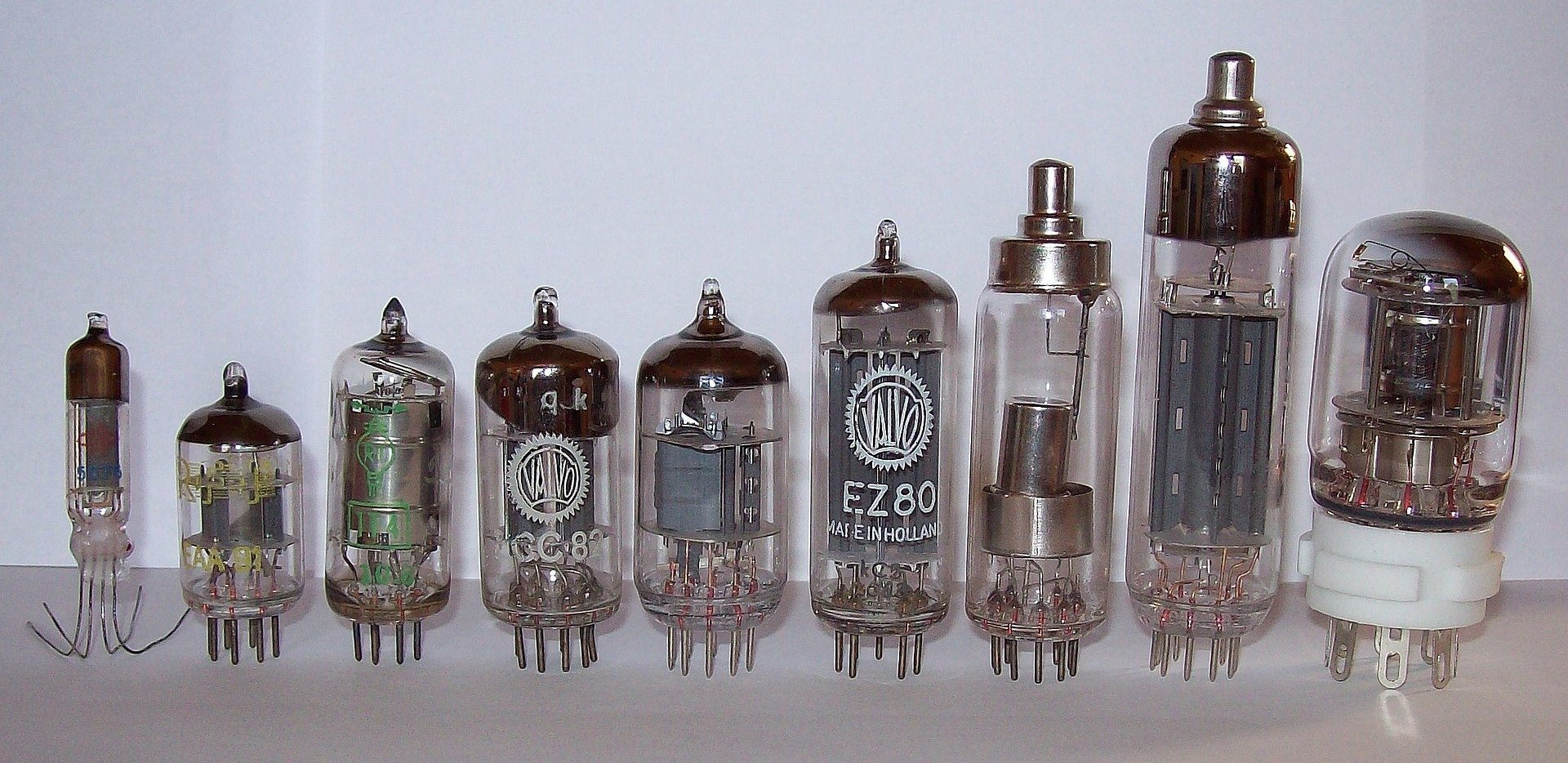
Were I just a few years younger, I’d be too young to have seen this technology, let alone remember it. This is a culture that’s no longer with us.
Before there were transistors, printed circuits, browsers and whatnot… there were vacuum tubes.
I can’t explain what a vacuum tube is or what it does, although my father and my uncle could. All I can tell you is that when I was a little boy, a TV set was chock-full of vacuum tubes. And there was this cool tube-testing machine at the local hardware store, where you could find out which tubes had to be replaced.
We don’t even have a hardware store anymore–to say nothing of persons who could take apart any appliance, fix what was wrong with it, and put it back together so it works. My father could do that with every appliance in his home. I can only shake my head in awe and wonderment.
That world has survived, but only with regard to Amateur Radio, HiFi enthusiasts and musical instrument amplification. Believe it or not,within the walls of my home are at least 8 tube driven amplifiers, including one that connects a Bluetooth device to a set of stereo speakers, and allows me to use a tube amp to listen to music kept on my iPad. Mostly, however, my tube amps are for guitars and basses and I even have a nice collection of replacement tubes. Believe it or not, tubes are still being produced and there are even some made in the US, on the same tooling that RCA used.
RCA “Blackplates” are highly prized and colectable. I have a guitar amp that was built two years ago which has a set of Blackplate 6V6s which might well be older than I am. It’s amazing how well these have held up over the years. A lot of the tubes in use today come from the far side of the former Iron Curtain. There’s nothing quite so incongruous as a Russian EF-86 driving the front end of a British designed amplifier built by a cottage industry builder in the US. I am looking at just such a creation, as I type this, and is sounds ridiculously good.
Likewise, tube testers still exist. Mine is military surplus and built like a battleship. I imagine that the tube testers in stores will never be seen again. The voltages required in some of these tubes could range as high as 600 VDC and I could imagine the potential for liability would be too high in this litigious age.
My uncle probably invented some of those tubes you have.
Vacuum tubes were a bit of American know-how, to be assured. Some of the greats were designed in the US, such as the 6L6 pentode (which had to pay royalties because the pentode patent was held in the Netherlands. But here’s where the American ingenuity came into play, the smaller, but still might 6V6 Beam Tetrode, which functioned as a pentode, but used a shaped electron beam to simulate the action of a pentode. Those little powerhouses were great sounding and could be teamed into a push-pull pair putting out 20 – 25 watts. One of the best sounding guitar amps ever built, the Fender Deluxe Reverb used a pair of 6V6s in the power amp section and because these were technically not pentodes, they could be produced in the US inexpensively. I have a set of RCA Blackplate 6V6s in an amp I use frequently.
Nothing against the Dutch, Phillips built some great tubes, including the amazing EL-84 Pentode which powers some of my favorite amp designs. In the US, Western electric and RCA were sources of continuous innovation, while in Europe, Phillips was knocking out some great designs.
I doubt that many people alive today are even dimly aware of the role Western Electric plays in modern life. They all but invented the science of acoustics.